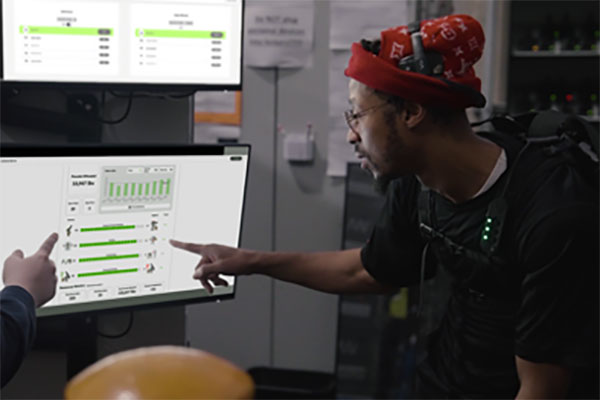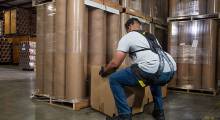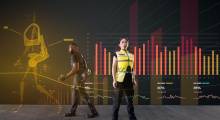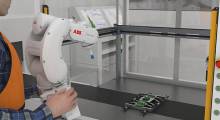Wearable robotics provider Verve Motion will showcase its recently introduced Verve Logic software and data analytics platform at MODEX 2024 in booth B4200. The Verve Logic platform will integrate into the company’s SafeLift exosuit.
Verve said its combined product offering aims to pinpoint critical areas that pose injury risks to industrial workers as they work, while simultaneously offering coaching to enhance both individual and group performance.
The MODEX trade show will be held March 11-14 at the Georgia World Congress Center in Atlanta, GA.
Analytics software to autonomously identify risky movements
Now available as a standard feature for its SafeLift exosuit, the Verve Logic platform delivers a suite of safety analytics, actionable reports, and insights, honing in on aspects such as ergonomic risk analysis, trend analysis, and exosuit utilization.
“The SafeLift exosuit development was informed through extended testing of human subjects where we collected biomechanics data in a lab environment” said Conor Walsh, scientific co-founder of Verve Motion. “It is exciting now that Verve Motion is making this same type of data available to workers and their organizations through Verve Logic so they can understand injury risk reduction and optimize the use of SafeLift for their operations.”
Sensors embedded in the SafeLift exosuit collect 3D motion and force data while the suit is in use. The Verve Logic platform gathers data such as lift count, usage duration, and weight offloaded. The software autonomously identifies risky movements, such as prolonged bending, excessive forward bending, twisting, and side bending.
Verve Logic platform to provide individualized feedback
Verve said its data collection approach provides individual workers and leadership teams an understanding of each employee’s day-to-day risks, informing intervention, coaching, and facility adjustments to minimize the likelihood of injuries.
Verve Logic creates safety reports that provide on-site safety trainers and leadership with clear, actionable insights related to safety. Individualized worker reports offer tailored coaching and feedback.
Verve Logic also offers a customized tool that allows on-site safety teams to pinpoint groups at greater risk of injury through analysis of factors such as job roles, shifts, and experience levels. Verve said this data-driven approach facilitates targeted enhancements in coaching and ergonomics, with Verve Logic software streamlining prioritization of these initiatives based on actual distribution site metrics.
Verve said one of its recent customers studied the impact of using its SafeLift exosuit through Verve Logic analytics. According to the customer’s findings, 97% of workers reported the exosuit assisted in their daily tasks and 83% reported it improved their lifting posture.
SafeLift exosuit combines robotic assistance with motion sensing
Verve’s SafeLift soft exosuit offers adaptive assistance customized for each worker and task. The lightweight exosuit’s form factor wears like a backpack.
The wearable system combines real-time motion sensing with robotic assistance. Verve said its SafeLift exosuit alleviates about 40% of the strain on a worker’s back during a typical workday by providing assistance in parallel with their underlying muscles.
“The real-world impact of this technology stems from the exosuit's dual function: it not only protects workers from injuries by supporting their bodies during ergonomically risky lifts but also lessens the effort needed for all lifts, including those considered ‘safe,’” said Christopher Buck, head of product at Verve Motion.
Verve Motion said its SafeLift exosuits have aided U.S. workers in lifting more than 300 million pounds since the wearable technology debuted in 2020. SafeLift exosuits have been deployed in a wide range of industries, including grocery, package distribution, third party logistics (3PL), retail, supply chain distribution, and manufacturing.
Want to learn more about data management in robots? This article was featured in the September 2024 Robotics 24/7 Special Focus Issue titled “Robots as mobile data platforms.”
Article topics
Email Sign Up

















